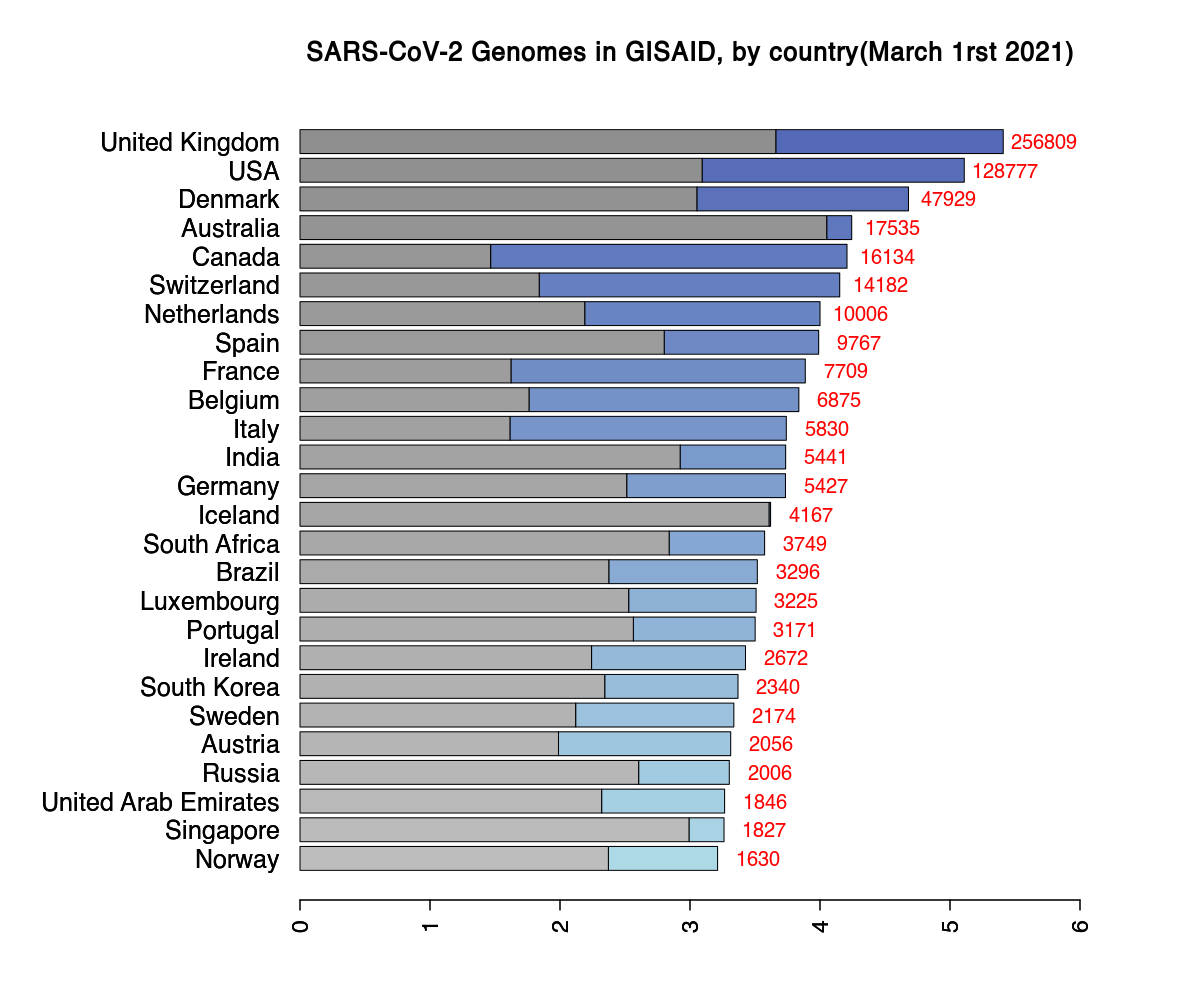SARS-CoV-2 genomes available from GISAID, as of February 26th 2021
Published: 10 March 2021

This figure provides an overview of the number of SARS-CoV-2 genomic sequences available in the GISAID database for different countries. Two different colors are used to highlight:
- Gray: genomes already present in the database at the time of our previous update (Jan 23rd)
- Blue: new genomes submitted in the last month (from Jan 24th to Feb 26th)
The figure highlights a step-change in the number of SARS-CoV-2 genomes produced by different countries, Italy included. Indeed, for several countries, the number of genomic sequences deposited in the GISAID database in the last month is equal to or in some cases even bigger than the number of genomes included in the database as of Jan 23th 2021. Implying that a number of genomes comparable to that obtained throughout all of 2020 have been sequenced and made available only in the last month. Apart from Italy, the same trend is observed also in other countries, including Canada, Switzerland or France.
The number of genomic sequences remains substantially unchanged from our last update of January 23rd, only for countries where the number of reported cases of COVID-19 is currently close to zero, such as Australia and Iceland.
The substantial increase in the number of genomes available for many countries demonstrates a clear improvement in “genomic surveillance” plans both at the national and international levels. The availability of an increasing amount of data will allow more careful monitoring of the evolution of the virus and facilitate a more rapid and precise identification of novel potentially dangerous variants.
Source: https://www.gisaid.org/